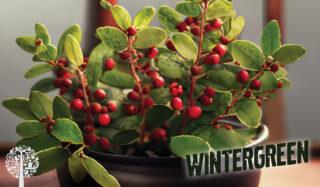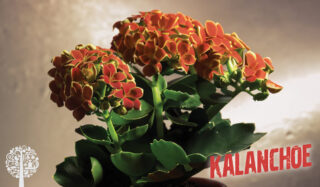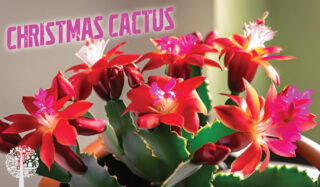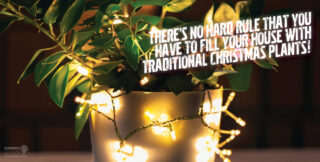We know it’s National Poinsettia Day, but may we be bold enough to suggest not splurging on this traditional holiday houseplant this year? Dissing the poinsettia on its special day seems absurd. But let’s explore why you should skip this popular potted plant and opt for something else to deck your halls this year.
Why We Say Skip ‘em
The poinsettia’s bright red showy display makes it appealing at Christmastime. But have you ever kept a poinsettia longer than two months? Me neither. And that seems wasteful. We’re all about the biggest bang for your buck at Garden Culture.
The truth is that even experienced gardeners have trouble keeping this plant alive after the holidays because it comes from a greenhouse environment and doesn’t like fluctuating temperatures or moisture levels. That’s not to say you can’t keep one from season to season, but it won’t be easy. Or pretty.
Speaking of unpretty, although not poisonous, poinsettias are toxic to pets and humans and will cause vomiting and diarrhea if ingested. A skin rash is also possible for some after handling the plant.
Another dark truth about poinsettias? Pests love them, whiteflies especially. You might also have problems with aphids, thrips, spider mites, and fungi gnats, to name a few. And no serious plant lover wants to introduce those into the indoor growing environment.
Are you ready to break away from a longstanding tradition? Let’s take a look at some incredible alternatives that put poinsettias to shame.
Norfolk Island Pine


The Norfolk Island Pine tops our list of holiday plant alternatives to poinsettias, and it’s easy to see why. This beautiful evergreen is a landscape plant in zones 10-11 but can be grown indoors in all other areas. If you treat it like a houseplant, it’ll grow from three to eight feet tall – outside, it can grow up to 200 feet! Caring for this beauty is pretty straightforward – it likes a lot of light and warm conditions. Mist it daily and give it a deep watering every two weeks. Decorate it at Christmastime, and afterward, enjoy its greenery throughout all other seasons.
Wintergreen


Wintergreen plants make lovely groundcover outside and typically peak in the winter when everything else in the garden sleeps. The leaves are rubbery and glossy green; many varieties produce bell-shaped flowers and bright red berries. Outside, this plant spreads via rhizomes. However, you can enjoy this cold-season stunner indoors in your favorite container! It enjoys bright light and only grows 6” high with a spread of around 12-18”. Wintergreen is a beautiful houseplant with a festive twist!
Kalanchoe


This pretty houseplant is an excellent alternative to poinsettias, typically blooming around Christmas and beyond. It’s super hardy and requires very little maintenance. Clusters of tiny flowers form above dark green, waxy foliage. You can choose plants with various colored flowers, so if red isn’t your favorite, you don’t have to stick to it! Pest problems are rare; if you take good care of the plant, you can keep Kalanchoe and watch it bloom again next year!
Christmas Cactus


Do you have an anxious pet who likes to chew things when you leave the house? Then the Christmas cactus is for you! Not that we want your plant to be devoured by Fido, but if it happens, he’ll be just fine (which can’t be said for the poinsettia). The Christmas cactus is long-lasting and flowers in pink or lilac throughout the winter, depending on the variety. After the blooms fade, you can enjoy its greenery throughout the year. This houseplant needs to be watered well every two to three weeks and likes dappled sunlight.
Houseplants in General
If you have a tall-growing, prickly cactus, consider decorating it with a string of lights or a garland. You can do the same with just about any houseplant. There’s no hard rule that you have to fill your house with traditional Christmas plants. Choose a variety that speaks to you and that you can enjoy year-round, with or without decorations!


![]()
